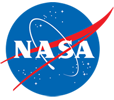Each month, Earth Observatory offers up a puzzling satellite image here on Earth Matters. The tenth puzzler is above. Your challenge is to use the comments section to tell us what part of the world we are looking at, when the image was acquired, and why the scene is interesting.
How to answer. Your answer can be a few words or several paragraphs. (Try to keep it shorter than 300 words). You might simply tell us what part of the world an image shows. Or you can dig deeper and explain what satellite and instrument produced the image, what spectral bands were used to create it, or what is compelling about some obscure speck in the far corner of an image. If you think something is interesting or noteworthy, tell us about it.
The prize. We can’t offer prize money for being the first to respond or for digging up the most interesting kernels of information. But, we can promise you credit and glory (well, maybe just credit). Roughly one week after a puzzler image appears on this blog, we will post an annotated and captioned version as our Image of the Day. In the credits, we’ll acknowledge the person who was first to correctly ID the image. We’ll also recognize people who offer the most interesting tidbits of information. Please include your preferred name or alias with your comment. If you work for an institution that you want us to recognize, please mention that as well.
Recent winners. If you’ve won the puzzler in the last few months, please sit on your hands for at least a few days to give others a chance to play.





Looks like somewhere in south Asia, part of a fold and thrust belt, with a dry river belt running through it.
There appears to be multiple deformation events, and multiple transport directions.
place – Pakistan
image date – november
interesting – river channel running through the middle of the formation seems unaltered by the tectonic forces surrounding it.
vue satellite , coupe sédimentaire sud Tunisie avec oued & palmier peut -être c’est du phosphate qui est en gris foncé .
merci pour Nasa
I think, it´s in Palestine. The so-called Bible caves on the coast of the Dead Sea where the Dead Sea Scrolls were discovered. Because of the new Pope. Just guessing
Its three tectonic plates that are coming together could Mile Serdo Wildlife Reserve
Could be somewhere in Pakistan, Afghanistan, a mountain route with trading
Or it could be somewhere on the border of Syria and one of its neighboring countries, with refugees traveling the mountain roads to escape the violence of the civil war.
Near Djibouti
an escarpment in the central Sahel, lots of dried up river beds and as yet, uneroded rocks thrust up with techtonic forces
Perhaps this in in the Zagros Mountains Region in Iran.
Parece que son las montañas de Afganistán.
Additional comments are on our March Puzzler facebook page post…
https://www.facebook.com/photo.php?fbid=10151545022907139&set=a.10150660751157139.441503.57242657138&type=1&theater
The direction of the fold implies that it would be located in an E-W trending fold and thrust belt, with a smaller amount on N-S stress as well.
Maybe near The San Jose Mine, in the Atacama Desert, Chile?
http://earthobservatory.nasa.gov/IOTD/view.php?id=46018
http://eoimages.gsfc.nasa.gov/images/imagerecords/46000/46018/sanjosemine_ali_2010259_lrg.jpg
undeva in himalaia
Oman Mountains – opheliolite
I think its tha grand canyons lol
I think it is in Saturn
Got it! This is the Khan mine in Namibia! This is an old copper mine.
lat -22.530608 long 15.021692
http://www.maplandia.com/namibia/erongo/khan-mine/
This fold is also south of the Rossing Uranium mine which has been reported as supplying yellow cake to Iran, though this has been denied.
Mountains surrounding Nazca, Peru.
We have exciting having, bring about I discovered just what exactly I’m interested in. You have ended my Five time long find! Goodness Many thanks man. Have a very good time. Ok bye kolagen na rozstępy